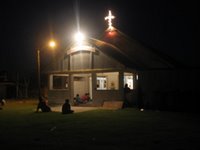Youth Suicide and Social Change in Micronesia by Donald H. Rubinstein
Suicide rates since 1960 in Micronesia (the U.S. Trust Territory of the Pacific Islands) have undergone an epidemic-like increase. This phenomenon is focused narrowly within the 15--24-year male age-group. Extremely high rates and culturally patterned motives and methods are now characteristic of this group. Survey research throughout Micronesia suggests that the epidemic increase in adolescent male suicide is a cohort effect among the first post-war generation. Traditional adolescent socialization in pre-war Micronesia largely involved village-level subsistence activities organized around communal lineage-houses. This extra-familial level of socialization served as a cultural solution to the residential and psychological distance post-pubertal males maintained from their domestic families.
With the post-war social change in Micronesia, the communal village-level of organization has largely disintegrated, causing adolescent socialization functions to be absorbed by the nuclear family. The resulting situations of intergenerational domestic discord appear the primary social triggers for adolescent suicide. At the same time, suicides have acquired subcultural significance among male youth, giving rise to fad-like and imitative acts. A 3-year research project is now being undertaken to conduct an ethnographic study of factors contributing to adolescent stress and suicide in one Micronesian community.
 Other Resources:
Other Resources:Suicide In Micronesia And Samoa: A Critique Of Explanations also by Donald H. Rubinstein
Suicide in the Micronesian Family by Francis X. Hezel, SJ
Micronesia's Male Suicide Rate Defies Solution New York Times, March 6, 1983
